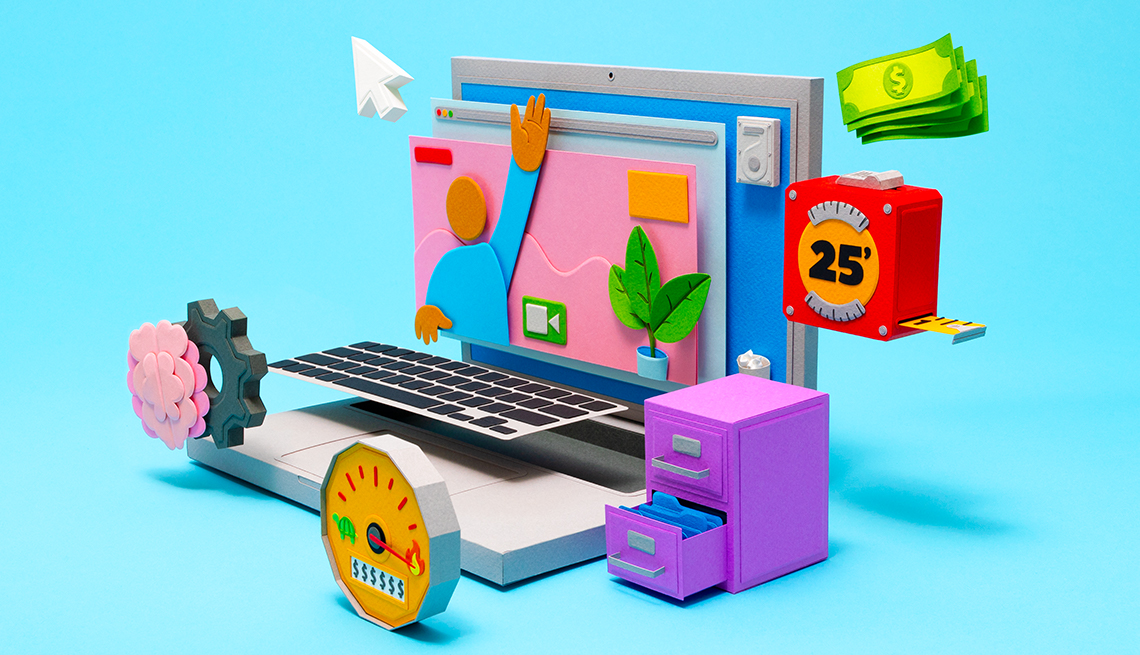
- Select a language for the TTS:
- UK English Female
- UK English Male
- US English Female
- US English Male
- Australian Female
- Australian Male
- Language selected: (auto detect) - EN
Play all audios:
You can get a hub starting at around $20. And many peripherals don’t require plugging in at all. Since your last computer purchase, your keyboard, mouse and printer have gone wireless, often
via Bluetooth. COST You should be able to find a computer suitable for most everyday needs for about $400. The difference is the quality of the components. “It’s like shopping for a watch.
You can buy a Timex, or you can buy a Rolex. Both will tell you the time,” says Nicholas De Leon, a senior electronics reporter at _Consumer Reports._ Mark Spoonauer, global editor in chief
of the Tom’s Guide tech-buying website, says a Windows laptop that costs less than $600 should last up to five years. More expensive models should have a longer life because they have more
speed, memory and storage. SCREEN SIZE A larger screen makes reading and viewing easier for older eyes. Whether you buy a monitor for a desktop computer or to hook up to a laptop, Ackerman
recommends one that is 27 or 32 inches. The sweet spot for laptops is 14 or 15 inches, which balances readability, portability, space efficiency and cost. Also, pay attention to screen
resolution specifications. Choose a model with full HD (1080p) resolution; avoid 720p, below today’s standards, or the new high-end 4K resolution displays, which curtail battery life. DATA
STORAGE A good starting point for internal storage is 256GB, but you could get by with less because of one big area of change in the past few years. Increasingly, computer users are storing
documents, photos and videos “in the cloud,” which means on secure servers you subscribe to and access online. This not only reduces your need for a large hard drive inside your computer but
also lets you access your files from your mobile devices and other computers. Another benefit: When you buy a new computer, you won’t need to transfer a mountain of data. TRY A CHROMEBOOK
The rise of cloud-based computing has led to a new laptop subcategory, Chromebooks, which run a Google operating system but are made by various manufacturers. These units come with minimal
internal storage and are typically less expensive and lighter. “One of the biggest trends is that Chromebooks have gotten a lot better,” Spoonauer says. “A lot of people dismissed them at
first as being for schoolkids. But their screens have gotten bigger, a lot of them have touch displays, they’re super simple to use, very secure and getting better in terms of design.” The
battery life also tends to be good, he says. OTHER THINGS TO CONSIDER: 1. AUDIO AND VIDEO Most computers sold today come with high-quality video and audio components — that is, built-in
speakers, cameras and microphones — and wireless Wi-Fi and Bluetooth capabilities. Salespeople may try to get you to invest in enhanced video cards, but they are primarily for hard-core
gamers. 2. DISC DRIVES Few laptops sold today have CD or DVD players because the uses have mostly gone away. Software is downloaded or even cloud-based, most music or videos today are
streamed over the internet and files are stored either on your hard drive or in the cloud. But if you require one, plug-in external CD-DVD players are available for less than $50. 3.
INTERNET CONNECTION Video calls freezing up? The problem may be with your internet service or Wi-Fi connection, says De Leon of _Consumer Reports. _Investing in a better router, using a
signal booster or getting higher-speed internet service could enhance your computer’s performance more than buying a higher-grade model.


:max_bytes(150000):strip_icc():focal(838x317:840x319)/Nick-Viall-and-Pregnant-Natalie-Joy-081323-02-d4f07249995940f18575155de23ae11a.jpg)



:max_bytes(150000):strip_icc():focal(319x0:321x2)/people_social_image-60e0c8af9eb14624a5b55f2c29dbe25b.png)



